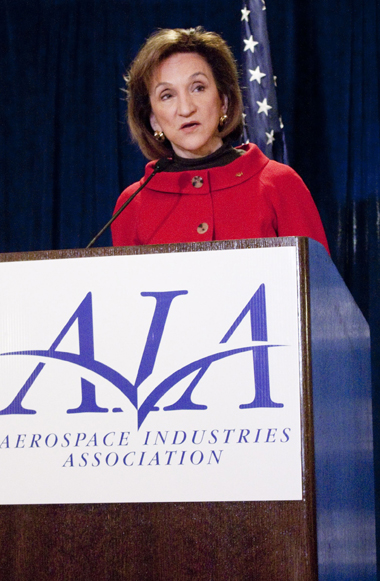 The U.S. Department of Transportation’s Federal Aviation Administration (FAA) released on Thursday its first annual Roadmap outlining efforts needed to safely integrate unmanned aircraft systems (UAS) into the nation’s airspace. “The FAA is committed to safe, efficient and timely integration of UAS into our airspace,” said FAA Administrator Michael Huerta (shown at right), at a forum at the Capital Hilton in Washington D.C., hosted by the Aerospace Industries Association (AIA). “We are dedicated to moving this exciting new technology along as quickly and safely as possible.”
The U.S. Department of Transportation’s Federal Aviation Administration (FAA) released on Thursday its first annual Roadmap outlining efforts needed to safely integrate unmanned aircraft systems (UAS) into the nation’s airspace. “The FAA is committed to safe, efficient and timely integration of UAS into our airspace,” said FAA Administrator Michael Huerta (shown at right), at a forum at the Capital Hilton in Washington D.C., hosted by the Aerospace Industries Association (AIA). “We are dedicated to moving this exciting new technology along as quickly and safely as possible.”
The Roadmap addresses current and future policies, regulations, technologies and procedures that will be required as demand moves the country from today’s limited accommodation of UAS operations to the extensive integration of UAS into the NextGen aviation system in the future.
Huerta also discussed FAA actions to ensure that public privacy concerns are addressed in the management of six upcoming UAS test sites around the country, and to help the agency’s Joint Planning and Development Office (JPDO) address the remaining technical challenges of enabling UAS systems to work for the benefit of our society and economy. Huerta confirmed to reporters that the FAA is on track to announce the six test sites by the end of the year.
Once selected the six UAS test sites will begin work on safely integrating UAS into the airspace. These congressionally-mandated test sites will conduct critical research into how best to safely integrate UAS systems into the national airspace over the next several years and what certification and navigation requirements will need to be established.
 Former FAA Administrator and current President and Chief Executive Officer of AIA, Marion Blakey introduced Huerta at the forum by applauding the FAA for the diligence to take on the privacy issue. Michael Toscano, President and CEO of the Association for Unmanned Vehicle Systems International also lauded the FAA for taking this important step toward integrating UAS and recognizing the many societal and economic benefits that will follow.Â
Former FAA Administrator and current President and Chief Executive Officer of AIA, Marion Blakey introduced Huerta at the forum by applauding the FAA for the diligence to take on the privacy issue. Michael Toscano, President and CEO of the Association for Unmanned Vehicle Systems International also lauded the FAA for taking this important step toward integrating UAS and recognizing the many societal and economic benefits that will follow.Â
The use of UAS, both at the designated test sites and in the national airspace generally, raises the issue of privacy and protection of civil liberties. In February, the FAA asked for public comments specifically on the draft privacy requirements for the six test sites. Today, the agency sent a final privacy policy to the Federal Register that requires test site operators to comply with federal, state, and other laws on individual privacy protection, to have a publicly available privacy plan and a written plan for data use and retention, and to conduct an annual review of privacy practices that allows for public comment. Information about the test site selection process and final test site privacy policy is available at: http://www.faa.gov/about/initiatives/uas/
For the next several years, the FAA will continue to use special mitigations and procedures to safely accommodate limited UAS access to the nation’s airspace on a case-by-case basis. The Roadmap notes that this case-by-case accommodation will decline significantly as integration begins and expands, but will continue to be a practical way to allow flights by some UAS operators in certain circumstances.
In addition to the FAA’s Roadmap, as required in the 2012 FAA Reauthorization, the Joint Planning and Development Office (JPDO) has developed a comprehensive plan to safely accelerate the integration of civil UAS into the national airspace system.. That plan details a multi-agency approach to safe and timely UAS integration and coordination with the NextGen shift to satellite-based technologies and new procedures.
The UAS Roadmap (PDF) and UAS Comprehensive Plan is available on the FAA website.



